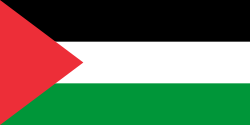 Gaza Strip Gaza Strip
518,000 UNRWA refugees |  West Bank West Bank
188,150 UNRWA refugees |  Syria Syria
319,958 UNRWA refugees |  Lebanon Lebanon
188,850 UNRWA refugees |  Jordan Jordan
355,500 UNRWA refugees |
| | Aqabat Jaber | 6,400 | | Ein as-Sultan | 1,900 | | Far'a | 7,600 | | Fawwar | 8,000 | | Jalazone | 11,000 | | Qalandia | 11,000 | | Am'ari | 10,500 | | Deir 'Ammar | 2,400 | | Dheisheh | 13,000 | | Aida | 4,700 | | Al-Arroub | 10,400 | | Askar | 15,900 | | Balata | 23,600 | | 'Azza (Beit Jibrin) | 1,000 | | Ein Beit al-Ma' (Camp No. 1) | 6,750 | | Tulkarm | 18,000 | | Nur Shams | 9,000 | | Jenin | 16,000 | | Shu'fat | 11,000 | | Silwad | | Birzeit |
| | Sabinah | 22,600 | | Khan al-Shih | 20,000 | | Nayrab | 20,500 | | Homs | 22,000 | | Jaramana | 18,658 | | Daraa | 10,000 | | Hama | 8,000 | | Khan Danoun | 10,000 | | Qabr Essit | 23,700 | | | | Unofficial camps | | Ein Al-Tal | 6,000 | | Latakia | 10,000 | | Yarmouk | 148,500 |
| | Bourj el-Barajneh | 17,945 | | Ain al-Hilweh | 54,116 | | El Buss | 11,254 | | Nahr al-Bared | 5,857 | | Shatila | 9,842 | | Wavel | 8,806 | | Mar Elias | 662 | | Mieh Mieh | 5,250 | | Beddawi | 16,500 | | Burj el-Shamali | 22,789 | | Dbayeh | 4,351 | | Rashidieh | 31,478 | | | | Former camps | | Tel al-Zaatar | ? | | Nabatieh | ? |
| | Zarqa | 20,000 | | Jabal el-Hussein | 29,000 | | Amman New (Wihdat) | 51,500 | | Souf | 20,000 | | Baqa'a | 104,000 | | Husn (Martyr Azmi el-Mufti camp) | 22,000 | | Irbid | 25,000 | | Jerash | 24,000 | | Marka | 53,000 | | Talbieh | 8,000 | | Al-Hassan | ? | | Madaba | ? | | Sokhna | ? |
|

